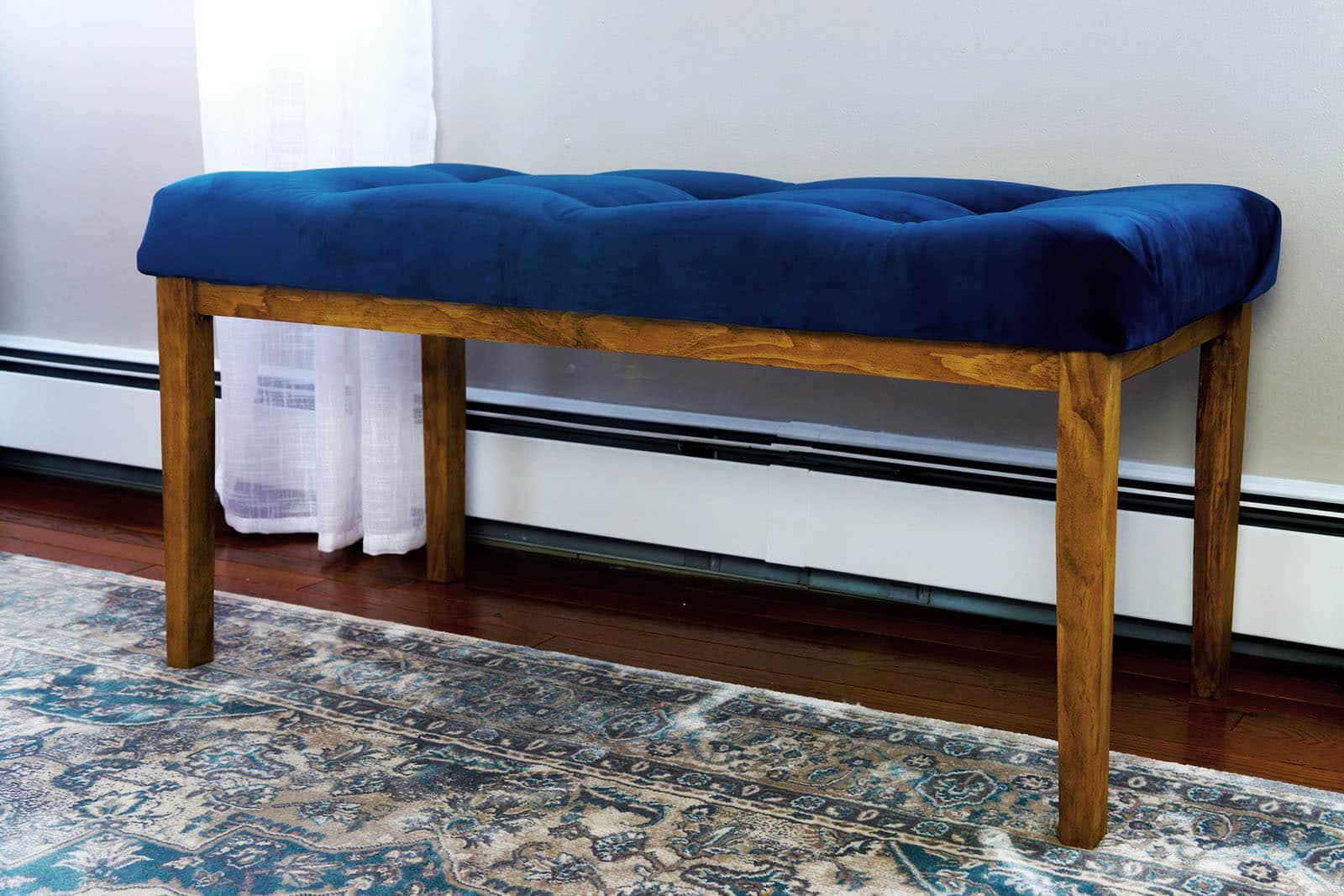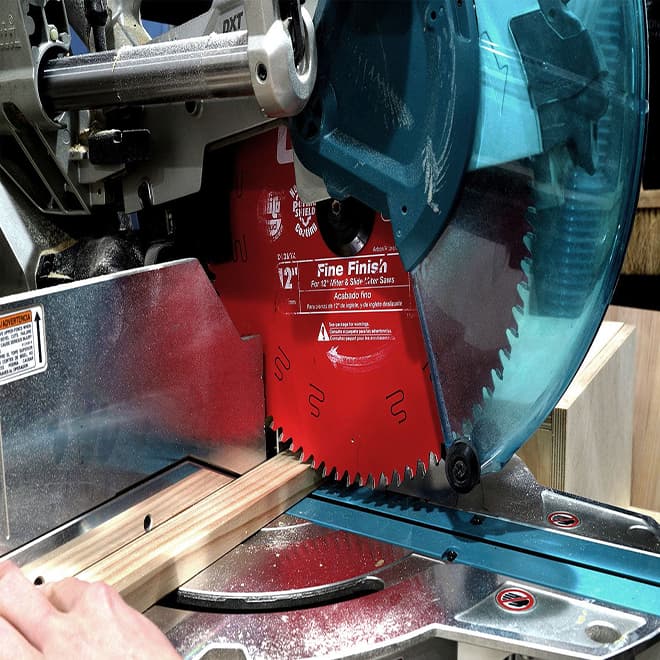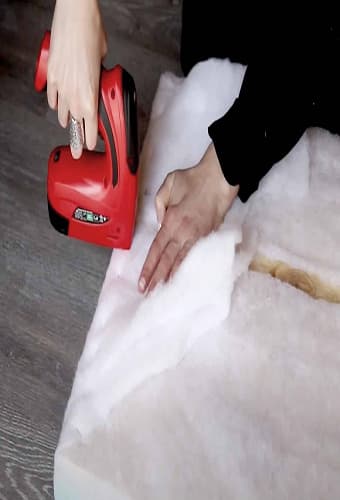DIY: VINTAGE-STYLE VELVET BENCH
By SAM RAIMONDI

GETTING STARTED
Creating custom furniture doesn’t have to be complicated! This easy DIY vintage-style velvet bench will add a touch of chic to any living space. Grab your Arrow E21 cordless electric staple gun and GT30Li cordless glue gun and let’s get to work!
YOU WILL NEED
Other Tools
Miter saw
Table saw or circular saw
Drill
Pocket hole jig
Scissors
Wood clamps (we recommend Pony Jorgensen)
Utility knife
Safety goggles
Pencil
Tape measure
Speed square
Materials
Arrow JT21 ⅜" staples
Arrow glue sticks
(1) 2" x 2" x 8' wood piece
(4) 1" x 2" x 6' wood pieces
(1) half sheet of ¾" plywood
Wood glue
Wood screws
1 ¼" pocket hole screws
Sandpaper
Rags
Wood stain
Polyurethane
3" upholstery foam
Spray adhesive
Batting
Velvet fabric of your choice
Button-making kit
PROJECT VIDEO
START BUILDING
STEP 1
First, use the miter saw to cut your 2″ x 2″ x 8′ wood into four 16″ legs. If you’d like, use a table saw or taper jig to taper the ends of the legs. Then cut the 1″ x 2″ x 6′ wood pieces to create the bench frame sides and supports.
Lengths
Legs: (4) 2″ x 2″ at 16″ length
Long frame sides: (2) 1″ x 2″ at 29″ length
Short frame sides: (2) 1″ x 2″ at 13″ length
Supports: (6) 1″ x 2″ at 12 ¼” length

STEP 9
Once the framed pegboard is securely in place, it’s time to decorate! Additional pegboard hooks can be purchased from home improvement stores or online. This is the perfect time to put your own special touch on the project.
STEP 2
Next, drill pocket holes into the ends of each of the frame sides and supports. The pocket holes should be on only one side of each piece, and for the legs and frame sides, aim to drill the pocket hole on a side that faces in. Start by attaching the frame sides to the legs at about a ¾” inset to create some depth at the corners. To assemble the pieces, first use wood glue and clamps to hold them in place, then secure with the 1 ¼” pocket hole screws.


STEP 3
Once the bench frame is built, you can sand, stain, and seal it (we used a polyurethane spray for this project instead of wiping or brushing it on).

STEP 4
Using a circular saw, cut your half sheet of ¾” plywood to create the bottom of your bench cushion. Then cut and attach your 3″ foam to the board using spray adhesive.

STEP 5
Add a layer of batting, followed by your fabric, and attach them to the plywood using your Arrow E21 cordless electric staple gun and Arrow JT21 ⅜” staples. After stapling down the batting, trim any excess so it will be covered when you wrap the bench with your fabric. Once you’ve secured the fabric with staples, trim any excess fabric as well. Pro tip: steam (do not iron!) your velvet fabric to get the wrinkles out.


STEP 6
To add some tufting to the cushion, drill a washer and screw through the top of the cushion and down into the plywood base. Repeat this step for each tuft. Once you’ve added the number of tufts you want, use some remaining fabric and your button-making kit to create custom buttons to cover each washer and screw. Glue them on using your Arrow GT30Li cordless glue gun.


STEP 7
To finish it all up, simply attach the cushion to the bench with wood screws from the underside.

FINISHED PRODUCT

Share your work with us on Facebook and Instagram by tagging @ArrowFastener or using #MadeWithArrow.
ABOUT THE AUTHOR

Sam Raimondi
Sam Raimondi from DIY Huntress is a full-time psychologist and side-hustling content creator who shares woodworking plans and home improvement ideas on a budget!
WANT TO BE A FEATURED ARROW BLOGGER?
We’d love to hear from you! If you would like to be an Arrow Project Partner and contribute future posts here, contact us at projects@arrowfastener.com
We look forward to hearing from you!